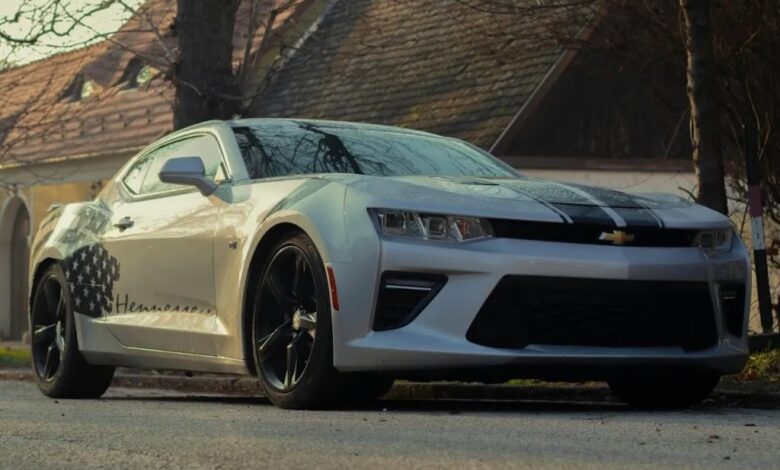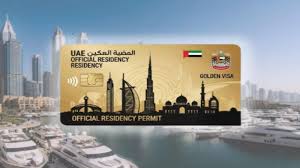How to Choose the Right Window Film for Your Vehicle: A Practical Guide for Melbourne Drivers

Window tinting isn’t just about giving your car a sleek look. For drivers across Melbourne, the right window film can make a big difference in comfort, safety, and even long-term vehicle protection.
With the city’s mix of hot summers, bright glare, and changing road conditions, choosing the right tint matters more than most people think. But between ceramic, carbon, and dyed films — not to mention the legal tint limits — it’s easy to feel confused.
This guide breaks everything down so you can make the right choice for your car, your lifestyle, and Melbourne’s driving conditions.
Why Window Tinting Is So Popular in Melbourne
If you’ve noticed more tinted cars on Melbourne’s roads, there’s a reason. Local drivers face intense sunlight and UV exposure, especially during the summer months. Window films help reduce glare, protect your skin from harmful rays, and keep the interior of your car cooler.
Here are the biggest reasons drivers choose professional window tinting in Melbourne:
- UV Protection: Quality tints block up to 99% of UV rays, keeping both passengers and upholstery safe.
- Heat Reduction: Films reduce interior heat by 40–70%, making the cabin more comfortable.
- Privacy: Tinted windows make it harder for others to see inside your car.
- Style: A well-tinted car simply looks better — clean, sharp, and modern.
- Safety: In case of an accident, film helps hold shattered glass together, reducing injury risks.
With these benefits in mind, let’s explore how to pick the right window film for your car.
Understanding the Different Types of Window Films
Not all tint films are the same. Each type offers its own balance of appearance, heat resistance, and cost. Below are the main options used in Melbourne’s professional tinting industry.
Dyed Window Film
This is the most affordable type of tint film. It uses a layer of dye to absorb sunlight and reduce glare.
Pros:
- Budget-friendly
- Decent privacy
- Dark appearance
Cons:
- Less effective at blocking heat
- May fade or discolor over time
- Shorter lifespan than premium films
Best for drivers who want a classic dark look without needing top-level performance.
Metalized Window Film
This type contains tiny metallic particles that reflect heat and sunlight away from the car.
Pros:
- Strong heat rejection
- Adds durability to windows
- Resists scratches better than dyed film
Cons:
- Can interfere with GPS or mobile signals
- More reflective finish (some prefer less shine)
Best for drivers who prioritize heat control but don’t rely heavily on in-car GPS or Bluetooth systems.
Carbon Window Film
Carbon tint uses carbon particles instead of metal or dye. It blocks infrared light and prevents fading inside the car.
Pros:
- Excellent UV and heat protection
- Matte finish, no reflective glare
- Long lifespan without fading
Cons:
- Slightly more expensive than metalized film
Best for car owners who want modern looks, cooler interiors, and long-term protection.
Ceramic Window Film
Ceramic tint is the premium choice. It uses nano-ceramic technology to block heat and UV rays while maintaining full visibility and signal clarity.
Pros:
- Highest heat and UV rejection
- No interference with electronics
- Long-lasting color stability
- Crystal-clear visibility
Cons:
- Higher cost compared to other types
Perfect for drivers who value comfort, performance, and top-level protection in Melbourne’s climate.
Understanding VLT — Visible Light Transmission
When choosing your tint, you’ll often hear the term VLT, which stands for Visible Light Transmission. It’s the percentage of light that passes through the window film.
For example:
- 35% VLT means 35% of light enters the car (a medium-dark tint).
- 5% VLT means only 5% of light enters (very dark, often called “limo tint”).
Melbourne’s vehicle tinting regulations limit how dark you can go.
Here’s a simple breakdown of the legal limits in Victoria:
| Window | Maximum Legal Tint Darkness (VLT) |
|---|---|
| Front Side Windows | 35% VLT |
| Rear Side Windows | 20% VLT |
| Rear Window | 20% VLT |
| Windscreen (Top Strip Only) | 10% band allowed at the top |
Following these limits ensures your car remains compliant and avoids fines or issues during roadworthy inspections.
How to Match Tint Type to Your Driving Habits
Different drivers have different needs. Here’s how to choose the best tint based on how and where you drive around Melbourne.
Daily City Commuter
If you spend most of your time in Melbourne’s CBD or traffic, go for ceramic or carbon film. These offer the best glare reduction during daylight hours and excellent clarity at night.
Long-Distance Drivers
For frequent highway trips under strong sun, metalized or ceramic films are ideal for maximum heat rejection and UV protection.
Family Vehicles
If you have kids or pets, prioritize UV blocking and heat reduction. Carbon or ceramic window tints work best, keeping interiors cooler and safer.
Style-Focused Owners
For aesthetic appeal, dyed films provide a dark, classic look without breaking the budget — perfect for show cars or city cruisers.
Choosing the Right Tint Shade
Tint shade isn’t just about looks — it affects comfort and visibility.
Here’s a quick reference:
| Tint Shade | Typical Use | Appearance |
|---|---|---|
| 50% VLT | Light tint for minimal glare | Almost clear |
| 35% VLT | Legal front window limit | Balanced look |
| 20% VLT | Popular for privacy and style | Medium-dark |
| 5% VLT | Limo-level darkness | Very private |
Pro tip: Choose the darkest legal shade for side and rear windows, but keep your front windows slightly lighter for better nighttime visibility.
How Professional Window Tinting Works
A proper installation makes a huge difference in how long your tint lasts and how good it looks.
Here’s what to expect from a professional car window tinting service in Melbourne:
- Inspection and Preparation
The installer checks the condition of your windows and cleans them thoroughly to remove dust or oil. - Film Selection and Cutting
Your chosen film is custom-cut to fit each window precisely using computer templates or hand-trimming. - Application
The tint is carefully applied using a water-based adhesive. Installers remove air bubbles using specialized tools to ensure a smooth, even finish. - Drying and Curing
After installation, the tint needs several days to fully cure. During this time, avoid rolling down the windows. - Final Check
The technician inspects every window to ensure proper adhesion, no bubbling, and uniform color.
A professional installation ensures your tint lasts for years without peeling or bubbling — something DIY kits can’t always guarantee.
Common Mistakes to Avoid When Choosing Window Tint
Even experienced drivers can make mistakes when choosing tint. Avoid these common pitfalls:
- Going too dark: Not only illegal but also dangerous for nighttime driving.
- Choosing cheap film: Low-quality tints fade, peel, or bubble within months.
- DIY installation: Air bubbles or poor adhesion can ruin the look and reduce visibility.
- Ignoring signal interference: Avoid metallic films if you rely on GPS or Bluetooth.
- Skipping warranty checks: Always ask if your tint comes with a manufacturer’s warranty.
When in doubt, talk to a certified Melbourne installer who understands local climate conditions and regulations.
Maintenance Tips to Keep Your Tint Looking New
Once your windows are tinted, proper care will help them last longer and maintain that flawless look.
- Wait before cleaning: Give the film 5–7 days to cure before wiping it.
- Use soft cloths: Avoid rough sponges or paper towels that can scratch the film.
- Mild cleaners only: Use ammonia-free products or a simple soap-water mix.
- Avoid stickers: Adhesives can damage the film.
- Park smart: Whenever possible, park in the shade to reduce heat exposure.
With these habits, your tint can easily last 10 years or more without fading or peeling.
Benefits of Professional vs. DIY Tinting
While DIY tint kits are cheap, the results rarely match professional standards.
| Factor | DIY Tint | Professional Tint |
|---|---|---|
| Durability | 1–2 years | 5–10+ years |
| Appearance | Bubbles, uneven edges | Smooth, factory-like finish |
| UV & Heat Protection | Low | High |
| Legal Compliance | Often incorrect | Fully compliant |
| Warranty | Usually none | Included |
Professional tinting ensures precision, legal compliance, and long-term performance — especially important for Melbourne’s hot summers and UV exposure.
The Environmental and Energy Benefits of Tinting
Beyond comfort and aesthetics, window tinting also has environmental advantages. By keeping your car cooler, you rely less on air conditioning, reducing fuel consumption.
This small change can lower your vehicle’s carbon footprint and extend the lifespan of your interior materials — from dashboard plastics to seat upholstery.
For eco-conscious Melbourne drivers, window film is both a smart and sustainable upgrade.
How Much Does Window Tinting Cost in Melbourne?
Prices vary depending on vehicle type, film quality, and the number of windows tinted.
Here’s a general guide:
| Vehicle Type | Standard Film | Ceramic Film |
|---|---|---|
| Sedan | $250–$400 | $450–$700 |
| SUV | $350–$500 | $600–$800 |
| Ute / 4WD | $300–$450 | $550–$750 |
While ceramic tints cost more upfront, they offer better durability and performance, making them a better long-term investment.
Final Thoughts: Making the Right Choice
Choosing the right window film isn’t just about appearance — it’s about protecting your comfort, safety, and investment.
By understanding the types of film, Melbourne’s tint laws, and your own driving needs, you can make an informed decision that keeps your car looking sharp and performing well in all conditions.
For professional advice, precise installation, and top-tier products, contact Graphic Window Tint — Melbourne’s trusted name in automotive tinting and paint protection.
Whether you drive a family SUV, a sports car, or a daily commuter, their experts can recommend the perfect window film to match your lifestyle and keep your vehicle protected year-round.


